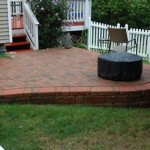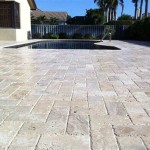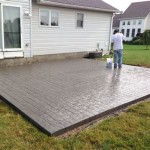Eliminating Flies From Your Patios: A Comprehensive Guide
Flies are a common nuisance, especially during warmer months, and their presence on patios can significantly diminish the enjoyment of outdoor spaces. These insects are not only irritating but can also pose health risks due to their ability to transmit diseases. Effectively managing and eliminating flies from patios requires a multi-faceted approach focusing on sanitation, prevention, and targeted control measures. This article provides a detailed guide on how to achieve a fly-free patio environment.
Understanding the Fly Problem on Patios
Before implementing control strategies, it is important to understand the factors that attract flies to patios and the types of flies commonly encountered. Flies are attracted to decaying organic matter, food spills, pet waste, and standing water. These elements provide breeding grounds and food sources necessary for their proliferation. Common patio fly species include house flies (Musca domestica), blow flies (Calliphoridae family), and fruit flies (Drosophilidae family). House flies are general feeders, attracted to a wide range of organic materials. Blow flies are often associated with decaying meat and animal waste. Fruit flies are drawn to fermenting fruits and vegetables. Identifying the specific type of fly present can help in selecting the most effective control method.
The life cycle of a fly involves four stages: egg, larva (maggot), pupa, and adult. Understanding this cycle is crucial for targeted intervention. Flies typically lay their eggs in decaying organic matter. The larvae then hatch and feed on this material, undergoing several molts before pupating. The pupa transforms into an adult fly, which emerges to breed and continue the cycle. Eliminating breeding sites is a primary strategy in controlling fly populations. Neglecting sanitation and allowing organic matter to accumulate creates ideal conditions for fly reproduction.
Factors beyond just immediate patio cleanliness also influence fly presence. Surrounding environments, such as nearby garbage containers, compost piles, or animal enclosures, can serve as fly reservoirs. Wind currents can carry flies from these areas to patios. Weather conditions, particularly warm temperatures and high humidity, accelerate fly development and activity. Therefore, addressing fly problems requires a holistic approach that considers both on-site and off-site factors.
Implementing Preventive Measures
Preventing flies from establishing themselves on patios is significantly more effective than attempting to control established populations. This involves a commitment to maintaining a clean and unattractive environment for flies. The following preventive measures should be consistently implemented:
Sanitation Practices: Regular cleaning is paramount. Food spills should be cleaned up immediately. Pet waste must be promptly removed and disposed of properly. Garbage containers should be tightly sealed and regularly emptied. Compost piles should be located away from the patio and managed to minimize odors and fly attraction. Standing water, such as in potted plant saucers or clogged gutters, provides breeding sites for mosquitoes and other insects, including certain fly species. Eliminate any sources of standing water.
Structural Barriers: Install screens on windows and doors to prevent flies from entering enclosed patio areas. Maintain the integrity of these screens, repairing any holes or tears. Consider using netting or screening around outdoor dining areas to create a physical barrier against flies. Doors should be self-closing to minimize the chance of flies entering when the door is left open. Weather stripping around doors and windows can also help to seal any gaps that flies could use to enter.
Proper Food Storage: Store food in airtight containers to prevent flies from accessing potential food sources. Cover food items during outdoor meals and gatherings. Avoid leaving food scraps or unfinished meals exposed on the patio. Clean grills and outdoor cooking areas thoroughly after each use to remove food residues that attract flies. Store pet food in sealed containers and clean up any spills promptly.
Landscaping Considerations: Choose plants that are less attractive to flies. Avoid plants that produce excessive nectar or fruit that can attract fruit flies. Keep lawns and gardens well-maintained, as overgrown vegetation can provide harborage for flies. Prune shrubs and trees to allow for better air circulation and sunlight penetration, which can discourage fly activity. Avoid using excessive amounts of mulch, as it can retain moisture and provide breeding sites for flies.
Effective Fly Control Strategies
Even with diligent preventive measures, fly control may still be necessary. Several strategies can be employed to eliminate existing fly populations and minimize their impact on patio enjoyment. These strategies can be categorized into traps, baits, and professional interventions. The selection of an appropriate strategy depends on the severity of the infestation and the specific fly species involved.
Fly Traps: Fly traps are a common and relatively inexpensive method for controlling flies. There are various types of fly traps available, each with its own advantages and disadvantages. Light traps, also known as electric fly killers, use ultraviolet (UV) light to attract flies, which are then electrocuted upon contact with an electrified grid. These traps are effective for attracting a wide range of fly species, but they require a power source and can be noisy. Sticky traps, also known as flypaper, are coated with an adhesive substance that traps flies as they land on the surface. These traps are simple to use and require no power, but they can be unsightly and may not be effective for all fly species. Bait traps utilize a bait to attract flies, which then become trapped inside the device. These traps are generally more effective for specific fly species that are strongly attracted to the bait. The effectiveness of fly traps depends on their proper placement. They should be located in areas where flies are most active, but away from areas where people congregate.
Fly Baits: Fly baits contain an insecticide mixed with an attractant, such as sugar or protein. Flies are attracted to the bait, ingest the insecticide, and die. Fly baits are available in various formulations, including granules, liquids, and gels. Granular baits are typically scattered around areas where flies congregate, such as near garbage containers or animal enclosures. Liquid baits are often placed in bait stations, which prevent non-target animals from accessing the insecticide. Gel baits are applied to surfaces where flies rest, such as walls or ceilings. The effectiveness of fly baits depends on the availability of other food sources. If flies have access to abundant food, they may be less likely to be attracted to the bait. It is important to follow the manufacturer's instructions carefully when using fly baits to ensure that they are applied safely and effectively.
Professional Interventions: In cases of severe fly infestations, professional pest control services may be necessary. Pest control professionals have the knowledge and experience to identify the source of the infestation and implement targeted control measures. They may use a combination of strategies, including insecticide applications, fogging, and source reduction. Insecticide applications should be performed by trained professionals to minimize the risk of exposure to humans and pets. Fogging involves the application of a fine mist of insecticide to kill adult flies. Source reduction involves eliminating breeding sites, such as by removing decaying organic matter or repairing drainage problems. The cost of professional pest control services can vary depending on the severity of the infestation and the control methods used. However, professional intervention can be a cost-effective solution in the long run, as it can prevent recurring fly problems.
Maintaining a Fly-Free Patio
Sustaining a fly-free patio requires continuous vigilance and a commitment to implementing the preventive and control measures described above. Regular monitoring of the patio and surrounding areas is essential to identify potential fly breeding sites or attractants. Prompt action should be taken to address any problems before they escalate. This proactive approach will help to minimize fly populations and ensure that the patio remains a pleasant and enjoyable outdoor space.
Consider incorporating fly-repelling plants into patio landscaping. Certain plants, such as basil, lavender, and rosemary, naturally repel flies and other insects. While these plants may not completely eliminate flies, they can contribute to reducing fly activity. Regularly assess the effectiveness of current control methods and adjust as needed. Fly populations can develop resistance to certain insecticides over time, so it may be necessary to switch to alternative control methods periodically. Consult with a pest control professional for advice on selecting the most effective control strategies for specific fly species.
Educate family members and guests about the importance of preventing flies on the patio. Encourage them to properly dispose of food scraps and clean up spills. Provide readily available trash receptacles and remind guests to use them. By working together to maintain a clean and unattractive environment for flies, it is possible to create a fly-free patio that can be enjoyed by everyone.

How To Get Rid Of Flies On Your Outdoor Patio

The Best Ways To Get Rid Of Flies In Backyard 15 Ideas

How To Keep Bugs Off Your Patio Turf Factory

The Best Ways To Get Rid Of Flies In Backyard 15 Ideas
:max_bytes(150000):strip_icc()/getting-rid-of-flies-outdoor-2656268_FINAL-729e4e7d8cd641dc9ccfaa659d73c98e.png?strip=all)
How To Get Rid Of Flies Outside On Porch Or In Backyard

The Best Ways To Get Rid Of Flies In Backyard 15 Ideas

Indoor And Outdoor Fly Traps Catchmaster

How Do You Get Rid Of Flies Outside Forbes Home

How To Get Rid Of Flies Outside Quick Easy Methods

How To Get Rid Of Flies On Your Outdoor Patio
Related Posts








